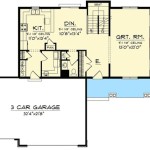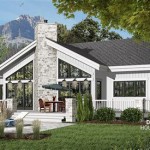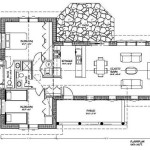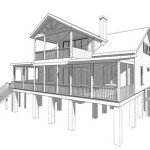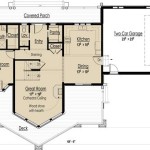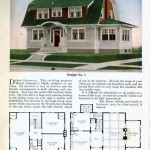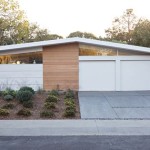Aging in place house plans are designed to allow elderly individuals to remain safely and comfortably in their homes as they age. These plans incorporate features that make it easier for seniors to navigate and use their homes, such as wider doorways, ramps, and grab bars. Aging in place house plans also typically include features that make it easier for caregivers to provide assistance, such as accessible bathrooms and kitchens.
One example of an aging in place house plan is the “Universal Design” concept. Universal Design principles aim to create environments that are accessible and usable for people of all ages and abilities. Universal Design features can be incorporated into any type of home, regardless of size or style.
As we age, our needs and abilities change. Aging in place house plans can help us to maintain our independence and quality of life as we get older. These plans can also provide peace of mind for our loved ones, knowing that we are safe and comfortable in our own homes.
Aging in place house plans incorporate features that make it easier for seniors to navigate and use their homes, such as wider doorways, ramps, and grab bars. These plans also typically include features that make it easier for caregivers to provide assistance, such as accessible bathrooms and kitchens.
- Wider doorways
- Ramps
- Grab bars
- Accessible bathrooms
- Accessible kitchens
- Universal Design features
- Single-story living
- Open floor plans
- Smart home technology
These are just a few of the important points to consider when designing an aging in place house plan. By incorporating these features, you can create a home that is safe, comfortable, and accessible for people of all ages and abilities.
Wider doorways
Wider doorways are an important feature of aging in place house plans. They make it easier for seniors to enter and exit their homes, and they can also accommodate wheelchairs and other mobility devices.
The ideal width for a doorway in an aging in place home is 36 inches. This width allows for easy passage of wheelchairs and other mobility devices, as well as for two people to pass through the doorway side-by-side.
In addition to being wider, doorways in aging in place homes should also be free of thresholds. Thresholds can create a tripping hazard for seniors, especially those who use wheelchairs or walkers.
If you are considering renovating your home to make it more age-friendly, widening the doorways is a good place to start. This relatively simple and inexpensive modification can make a big difference in the safety and accessibility of your home.
Here are some additional tips for widening doorways:
- If possible, widen the doorway on both sides. This will create a more symmetrical and aesthetically pleasing look.
- If you are widening a doorway that leads to a bathroom or kitchen, make sure that the new doorway is wide enough to accommodate a wheelchair.
- Be sure to check local building codes before widening any doorways. There may be specific requirements for the width of doorways in certain types of buildings.
Ramps
Ramps are another important feature of aging in place house plans. They provide a safe and easy way for seniors to enter and exit their homes, and they can also be used to access different levels of the home.
The ideal for an aging in place home is 1:12. This means that for every 1 foot of rise, theshould be 12 feet long. This is gentle enough for seniors to navigate safely, even if they are using a wheelchair or walker.
In addition to being the correct, ramps in aging in place homes should also be at least 36 inches wide. This width allows for easy passage of wheelchairs and other mobility devices, as well as for two people to pass each other side-by-side.
Ramps should also be equipped with handrails on both sides. Handrails provide support and stability for seniors as they are using the.
Here are some additional tips for installing ramps in aging in place homes:
- Make sure that theis well-lit, especially at night.
- Keep the clear of snow and ice in the winter.
- If the is longer than 20 feet, consider installing a resting platform halfway up the.
- Be sure to check local building codes before installing any ramps. There may be specific requirements for the, width, and other features of ramps in certain types of buildings.
Ramps are an important part of aging in place house plans. By providing a safe and easy way for seniors to enter and exit their homes, ramps can help them to maintain their independence and quality of life.
Grab bars
Grab bars are an important safety feature for aging in place homes. They provide support and stability for seniors as they are getting in and out of the bathtub or shower, using the toilet, or moving around the bathroom.
Grab bars should be installed in all bathrooms, and they should be placed in strategic locations where they can be easily reached. The most common places to install grab bars are:
- Next to the toilet
- In the bathtub or shower
- On the wall next to the sink
- On the wall next to the bathtub or shower
Grab bars should be installed securely and should be able to support the weight of a person. They should also be placed at a height that is comfortable for the user.
Here are some additional tips for installing grab bars in aging in place homes:
- Make sure that the grab bars are installed into studs in the wall. This will ensure that they are secure and can support the weight of a person.
- Use grab bars that are the appropriate size for the user. Grab bars that are too small will not provide adequate support, and grab bars that are too large will be difficult to use.
- Place the grab bars at a height that is comfortable for the user. The ideal height for grab bars is between 33 and 36 inches above the floor.
- Install grab bars in all bathrooms, and make sure that they are placed in strategic locations where they can be easily reached.
Grab bars are an important safety feature for aging in place homes. By providing support and stability, grab bars can help seniors to maintain their independence and quality of life.
Accessible bathrooms
Accessible bathrooms are an important part of aging in place house plans. They are designed to make it easier for seniors to use the bathroom safely and independently.
There are a number of features that can make a bathroom more accessible, including:
- Wider doorways
- Roll-in showers
- Grab bars
- Raised toilets
- Accessible sinks
Wider doorways make it easier for seniors to enter and exit the bathroom, and they can also accommodate wheelchairs and other mobility devices.
Roll-in showers are showers that are designed to be accessible to people with disabilities. They have a zero-threshold entry, which means that there is no step to step over, and they are typically larger than standard showers, which allows for more room to move around.
Grab bars provide support and stability for seniors as they are getting in and out of the shower or bathtub, using the toilet, or moving around the bathroom.
Raised toilets are toilets that are higher than standard toilets, which makes it easier for seniors to sit down and stand up. They may also have grab bars installed next to them for added support.
Accessible sinks are sinks that are designed to be accessible to people with disabilities. They may have features such as lever handles, which are easier to use than traditional knobs, and they may be placed at a height that is comfortable for people who are seated in a wheelchair.
By incorporating these features into your bathroom, you can create a space that is safe and accessible for seniors. This will allow them to maintain their independence and quality of life as they age.
Accessible kitchens
Accessible kitchens are an important part of aging in place house plans. They are designed to make it easier for seniors to cook, clean, and perform other kitchen tasks safely and independently.
There are a number of features that can make a kitchen more accessible, including:
- Wider doorways
- Lowered countertops
- Accessible sinks
- Pull-out shelves and drawers
- Easy-to-reach appliances
Wider doorways make it easier for seniors to enter and exit the kitchen, and they can also accommodate wheelchairs and other mobility devices.
Lowered countertops make it easier for seniors to reach and use the sink, stove, and other appliances. They may also have adjustable heights, which allows them to be customized to the user’s needs.
Accessible sinks are sinks that are designed to be accessible to people with disabilities. They may have features such as lever handles, which are easier to use than traditional knobs, and they may be placed at a height that is comfortable for people who are seated in a wheelchair.
Pull-out shelves and drawers make it easier for seniors to reach items that are stored in the back of cabinets. They also make it easier to organize and access pots, pans, and other kitchen supplies.
Easy-to-reach appliances are appliances that are placed at a height that is comfortable for seniors to use. They may also have features such as large buttons and easy-to-read displays.
By incorporating these features into your kitchen, you can create a space that is safe and accessible for seniors. This will allow them to maintain their independence and quality of life as they age.
Universal Design features
Universal Design features are design elements that make a space accessible and usable for people of all ages and abilities. These features can be incorporated into any type of home, regardless of size or style. Universal Design features can make it easier for seniors to live independently and safely in their homes as they age.
- Wider doorways and hallways
Wider doorways and hallways make it easier for people to move around, especially for those who use wheelchairs or other mobility devices. The ideal width for a doorway is 36 inches, and the ideal width for a hallway is 42 inches.
- Lowered countertops
Lowered countertops make it easier for people to reach and use the sink, stove, and other appliances. The ideal height for a countertop is between 28 and 34 inches.
- Accessible sinks
Accessible sinks are sinks that are designed to be accessible to people with disabilities. They may have features such as lever handles, which are easier to use than traditional knobs, and they may be placed at a height that is comfortable for people who are seated in a wheelchair.
- Pull-out shelves and drawers
Pull-out shelves and drawers make it easier for people to reach items that are stored in the back of cabinets. They also make it easier to organize and access pots, pans, and other kitchen supplies.
These are just a few of the many Universal Design features that can be incorporated into aging in place house plans. By incorporating these features, you can create a home that is safe, comfortable, and accessible for people of all ages and abilities.
Single-story living
Single-story living is a popular choice for aging in place house plans. It eliminates the need for stairs, which can be difficult and dangerous for seniors to navigate. Single-story homes also tend to be more compact and easier to maintain than multi-story homes, which can be a major advantage for seniors who are living on a fixed income.
There are a number of different single-story house plans available, so you can find one that fits your needs and preferences. Some single-story house plans include features such as wider doorways, ramps, and grab bars, which can make it easier for seniors to move around safely and independently.
If you are considering building a new home or remodeling your existing home to make it more age-friendly, single-story living is a great option to consider. It can help you to maintain your independence and quality of life as you age.
Here are some of the benefits of single-story living for seniors:
- Eliminates the need for stairs. Stairs can be a major obstacle for seniors, especially those who have mobility impairments. Single-story living eliminates the need for stairs, making it easier and safer for seniors to get around their homes.
- More compact and easier to maintain. Single-story homes are typically more compact and easier to maintain than multi-story homes. This can be a major advantage for seniors who are living on a fixed income and who may not have the time or energy to maintain a large home.
- Can be customized to meet your needs. There are a number of different single-story house plans available, so you can find one that fits your needs and preferences. Some single-story house plans include features such as wider doorways, ramps, and grab bars, which can make it easier for seniors to move around safely and independently.
Open floor plans
Open floor plans are another popular feature of aging in place house plans. They create a more spacious and inviting environment, and they can make it easier for seniors to move around and socialize.
- Easier to navigate. Open floor plans eliminate the need for hallways and other barriers, which can make it easier for seniors to navigate their homes. This is especially important for seniors who use wheelchairs or other mobility devices.
- More spacious and inviting. Open floor plans create a more spacious and inviting environment, which can be beneficial for seniors who spend a lot of time at home. They also make it easier for seniors to entertain guests and family members.
- Improved visibility. Open floor plans provide improved visibility, which can be helpful for seniors who have low vision. They can also make it easier for caregivers to keep an eye on seniors.
- More social. Open floor plans encourage socialization, which is important for seniors who may be at risk for isolation. They can also make it easier for caregivers to interact with seniors.
If you are considering building a new home or remodeling your existing home to make it more age-friendly, an open floor plan is a great option to consider. It can help you to maintain your independence and quality of life as you age.
Smart home technology
Smart home technology can be a valuable asset for seniors who are aging in place. It can help them to maintain their independence and quality of life by making it easier for them to perform everyday tasks, stay connected with loved ones, and manage their health and well-being.
There are a wide range of smart home devices available, so you can find ones that meet your specific needs and preferences. Some popular smart home devices for seniors include:
- Smart thermostats: Smart thermostats can be controlled remotely, so you can adjust the temperature of your home from anywhere. This can be helpful for seniors who have difficulty getting around or who want to save energy.
- Smart lighting: Smart lighting can be controlled remotely, so you can turn lights on and off without getting up. This can be helpful for seniors who have difficulty moving around or who want to improve their safety and security.
- Smart home security systems: Smart home security systems can monitor your home for activity and send you alerts if something is wrong. This can give you peace of mind and help you to stay safe.
- Smart smoke and carbon monoxide detectors: Smart smoke and carbon monoxide detectors can send you alerts if they detect smoke or carbon monoxide in your home. This can give you peace of mind and help you to stay safe.
In addition to these devices, there are also a number of smart home apps available that can help seniors to manage their health and well-being. These apps can track your vital signs, monitor your medication intake, and provide you with access to health information and resources.
Smart home technology is still a relatively new field, but it has the potential to revolutionize the way we care for seniors. By making it easier for seniors to live independently and safely, smart home technology can help them to maintain their quality of life and age in place.
Here are some additional benefits of smart home technology for seniors:
- Increased independence: Smart home technology can help seniors to maintain their independence by making it easier for them to perform everyday tasks. For example, smart thermostats can be controlled remotely, so seniors can adjust the temperature of their home without getting up. Smart lighting can be controlled remotely, so seniors can turn lights on and off without getting up. This can be especially helpful for seniors who have difficulty moving around.
- Improved safety and security: Smart home security systems can monitor your home for activity and send you alerts if something is wrong. This can give you peace of mind and help you to stay safe. Smart smoke and carbon monoxide detectors can send you alerts if they detect smoke or carbon monoxide in your home. This can give you peace of mind and help you to stay safe.
- Better health management: Smart home apps can track your vital signs, monitor your medication intake, and provide you with access to health information and resources. This can help you to manage your health and well-being more effectively.










Related Posts

